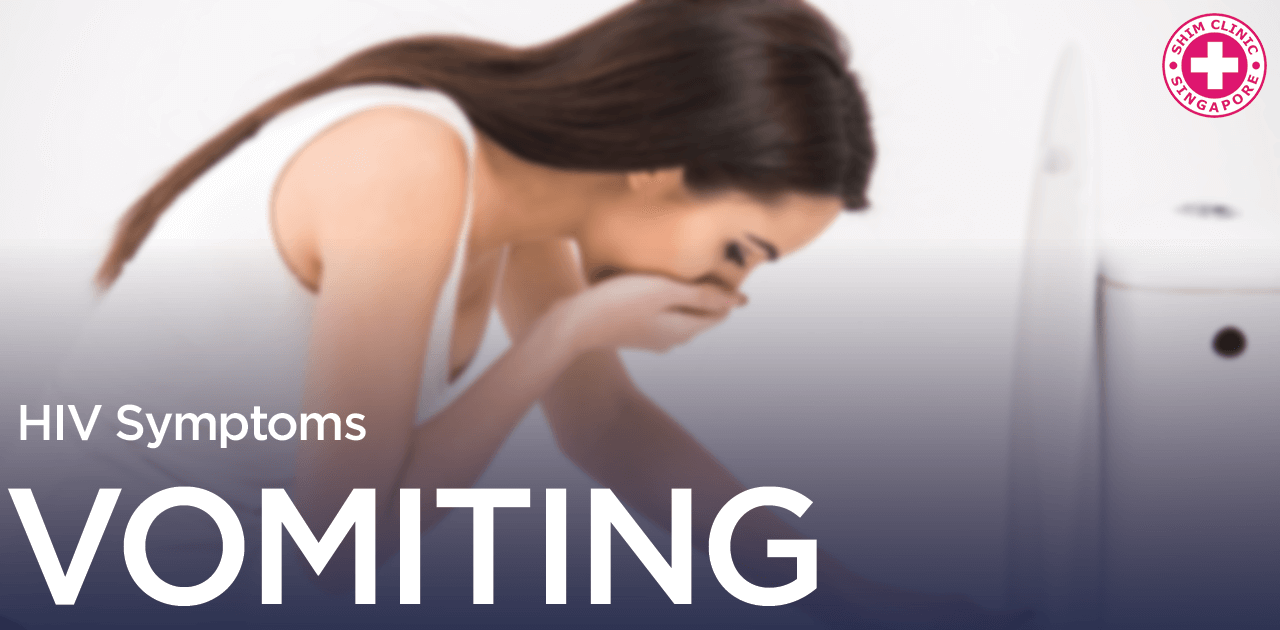HIV Vomiting Singapore | Shim Clinic
| Help me about HIV Vomiting ! |

| Permalink: https://shimclinic.sg/hiv-vomiting |
Vomiting can be a symptom of an infectious disease, ingestion of toxins, kidney disease, diabetes, or many other causes. It may be a sign of acute HIV infection, which is the earliest phase of the infection and may have flu-like symptoms. HIV tests can miss an early infection.
Vomiting can be a symptom of many different diseases. Someone who is vomiting almost always has nausea, but not everyone who has nausea also vomits. It’s important to monitor the hydration of someone who is vomiting frequently. A person who is vomiting can become severely dehydrated, and may not be able to replace those fluids through drinking, because they’ll vomit the ingested fluid back up before it can be absorbed. If you’re vomiting and you become lightheaded, have a very dry mouth or lips, or your urine is very dark, then you should seek medical attention as soon as possible.
Vomiting has a wide variety of potential causes. It can be caused by many different infectious diseases. Some are transmitted on surfaces (such as sink handles and doorknobs), while others are food-borne. Vomiting can also occur due to toxins, which may be ingested or internally generated. Ingested toxins include alcohol and medications, while internally generated ones include urea (which is normally eliminated by the kidneys, and is high in the case of kidney disease). Diabetes can cause vomiting by damaging the nerves that control the stomach.
- Vomiting can be a symptom of many different diseases, including infectious diseases, ingestion of toxins, kidney disease, diabetes, and others.
- It’s very important to stay hydrated while vomiting. If you can’t, seek medical attention.
- The early phase of HIV infection, called acute HIV infection, can cause a flu-like illness that may include vomiting.
- An HIV test is the only way to diagnose HIV.
- HIV tests may miss an early infection. If your test is negative (shows no HIV) but HIV is still suspected, you may be asked to return in a few weeks for another test.
The early phase of HIV infection, which is called acute HIV infection, can cause a flu-like illness that may have nausea and vomiting as symptoms. Other gastrointestinal symptoms, such as diarrhoea, may also occur. In addition, there may be a variety of other symptoms, including fever, headache, and rash. They occur 2 to 4 weeks after exposure. Some people have very mild symptoms or no symptoms at all during this period, while others feel like they have a very bad flu for several weeks.
These are common symptoms that occur during many different viral infections, and it’s not possible to diagnose HIV based on having HIV symptoms. Instead, it’s necessary to get an HIV test to find out if your symptoms are really HIV symptoms. The type of HIV test used is called a fourth-generation HIV test, and it can detect an infection 2 to 6 weeks after the exposure. Because the symptoms begin 2 to 4 weeks after the exposure, some people who have HIV symptoms will get a false-negative HIV test during the period of acute HIV infection. In other words, the test will show that you don’t have HIV, when you really do have it. If HIV is suspected and your test is negative, you may be asked to return in a few weeks to get another HIV test.
Sources:
Mayo Clinic. “STD symptoms: Common STDs and their symptoms.” Mayo Clinic. Published 18 Mar 2015. Accessed 20 Jul 2016. http://www.mayoclinic.org/std-symptoms/art-20047081
Centers for Disease Control and Prevention. “Screening Recommendations Referenced in Treatment Guidelines and Original Recommendation Sources.” Centers for Disease Control and Prevention. Published 04 Jun 2015. Accessed 20 Jul 2016. http://www.cdc.gov/std/tg2015/screening-recommendations.htm
Centers for Disease Control and Prevention. “HIV/AIDS.” Centers for Disease Control and Prevention. Published 05 Jul 2016. Accessed 27 Jul 2016. http://www.cdc.gov/hiv/
Centers for Disease Control and Prevention. “HIV Basics – Testing.” Centers for Disease Control and Prevention. Published 12 Jul 2016. Accessed 20 Jul 2016. http://www.cdc.gov/hiv/basics/testing.html
U.S. Department of Health & Human Services. “Post-Exposure Prophylaxis (PEP).” AIDS.gov. Published 21 Sep 2015. Accessed 20 Jul 2016. https://www.aids.gov/hiv-aids-basics/prevention/reduce-your-risk/post-exposure-prophylaxis/
| Timeline | HIV | STD | Pregnancy |
|---|---|---|---|
| Before exposure | |||
| Contraception (females only) | |||
| HIV PrEP (pre-exposure prophylaxis) - Stop HIV infection before exposure | STD vaccine: - Hepatitis vaccine - HPV vaccine | ||
| STD / HIV exposure | |||
| 0-72 hours | HIV PEP (post-exposure prophylaxis) - Stop HIV infection after exposure | STD testing * - Screening test - to look for asymptomatic infections - from previous exposures | Emergency contraception with the morning-after pill (females only) |
| 2 weeks | HIV DNA Test | ||
| 1 month | HIV 4th Generation Test - SD Bioline HIV Ag/Ab Combo - Fingerprick blood sampling. - 20 minutes to results | ||
| 3 months | HIV 3rd Generation Test - OraQuick® HIV-1/2 Antibody - Oral fluid or - Fingerprick blood sampling. - 20 minutes to results | STD testing * - Full & comprehensive - diagnostic test - to look for current infections | |
| Watch for | HIV Symptoms | STD Symptoms | |
| If infected | HIV Treatment | STD Treatment | Abortion |
References
